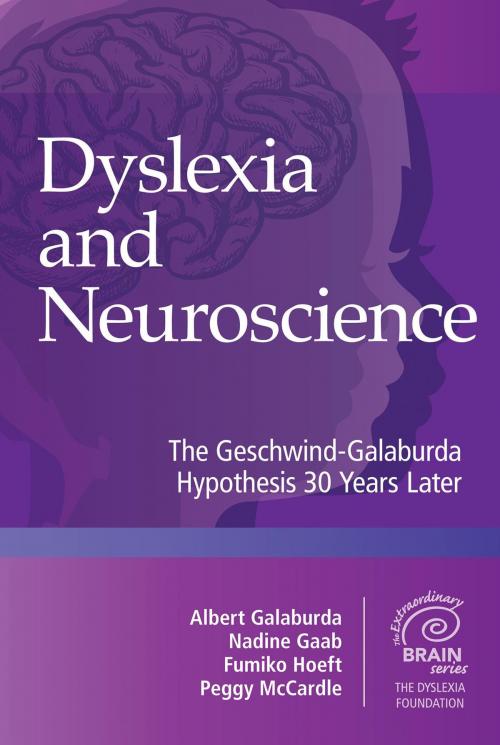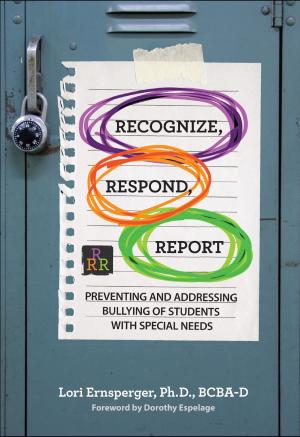Dyslexia and Neuroscience
The Geschwind-Galaburda Hypothesis 30 Years Later
Nonfiction, Health & Well Being, Medical, Specialties, Internal Medicine, Neuroscience, Psychology, Developmental Psychology, Cognitive Psychology| Author: | ISBN: | 9781681252605 | |
| Publisher: | Brookes Publishing | Publication: | November 30, 2017 |
| Imprint: | Brookes Publishing | Language: | English |
| Author: | |
| ISBN: | 9781681252605 |
| Publisher: | Brookes Publishing |
| Publication: | November 30, 2017 |
| Imprint: | Brookes Publishing |
| Language: | English |
Thirty years ago, the groundbreaking Geschwind-Galaburda hypothesis defined the field of dyslexia, revealing and analyzing the complex associations among brain development, hormones, immune activity, and brain lateralization. This important volume revisits the hypothesis three decades later and explores key questions: What have we learned since then, and what still needs to be investigated?
Based on presentations from the 2016 Extraordinary Brain Symposium-and co-edited by one of the authors of the original hypothesis-this book synthesizes current dyslexia findings from more than 30 top researchers and practitioners. The contributors share diverse perspectives, concerns, challenges, and solutions, with brief jargon-free summaries at the beginning of each chapter to make the book accessible to a wider audience. Each chapter also points to research gaps and remaining questions to help shape future innovations from the next generation of researchers. A landmark addition to the literature on dyslexia and neuroscience, this forward-thinking volume should be on the shelf of every researcher and graduate student whose work focuses on neuroscience and dyslexia.
EXPLORE CURRENT FINDINGS ON
- the clinical and sociological aspects of dyslexia
- early atypical brain development in developmental dyslexia
- reading in children with developmental disorders
- brain asymmetries and sex differences in developmental dyslexia
- sex differences in cognition and learning
- intergenerational transmission of reading and reading brain networks
- animal models of early neural disruption
- the genetic factors that underlie handedness and left hemisphere language dominance
- the genetics of specific reading disability
- and more essential dyslexia topics
With contributions by
David Urion
John L.R. Rubenstein
Geert J. de Vries
Thomas G. OConnor
Tuong-Vi Nguyen
Margaret M. McCarthy
Franck Ramus
Eileen Luders
David S. Hong
R. Holly Fitch
Laurie Cutting
Elena Grigorenko
Sebastian Ocklenburg
Silvia Paracchini
Sergey Kornilov
Heidi Feldman
Nicole Landi
and more
Thirty years ago, the groundbreaking Geschwind-Galaburda hypothesis defined the field of dyslexia, revealing and analyzing the complex associations among brain development, hormones, immune activity, and brain lateralization. This important volume revisits the hypothesis three decades later and explores key questions: What have we learned since then, and what still needs to be investigated?
Based on presentations from the 2016 Extraordinary Brain Symposium-and co-edited by one of the authors of the original hypothesis-this book synthesizes current dyslexia findings from more than 30 top researchers and practitioners. The contributors share diverse perspectives, concerns, challenges, and solutions, with brief jargon-free summaries at the beginning of each chapter to make the book accessible to a wider audience. Each chapter also points to research gaps and remaining questions to help shape future innovations from the next generation of researchers. A landmark addition to the literature on dyslexia and neuroscience, this forward-thinking volume should be on the shelf of every researcher and graduate student whose work focuses on neuroscience and dyslexia.
EXPLORE CURRENT FINDINGS ON
- the clinical and sociological aspects of dyslexia
- early atypical brain development in developmental dyslexia
- reading in children with developmental disorders
- brain asymmetries and sex differences in developmental dyslexia
- sex differences in cognition and learning
- intergenerational transmission of reading and reading brain networks
- animal models of early neural disruption
- the genetic factors that underlie handedness and left hemisphere language dominance
- the genetics of specific reading disability
- and more essential dyslexia topics
With contributions by
David Urion
John L.R. Rubenstein
Geert J. de Vries
Thomas G. OConnor
Tuong-Vi Nguyen
Margaret M. McCarthy
Franck Ramus
Eileen Luders
David S. Hong
R. Holly Fitch
Laurie Cutting
Elena Grigorenko
Sebastian Ocklenburg
Silvia Paracchini
Sergey Kornilov
Heidi Feldman
Nicole Landi
and more















